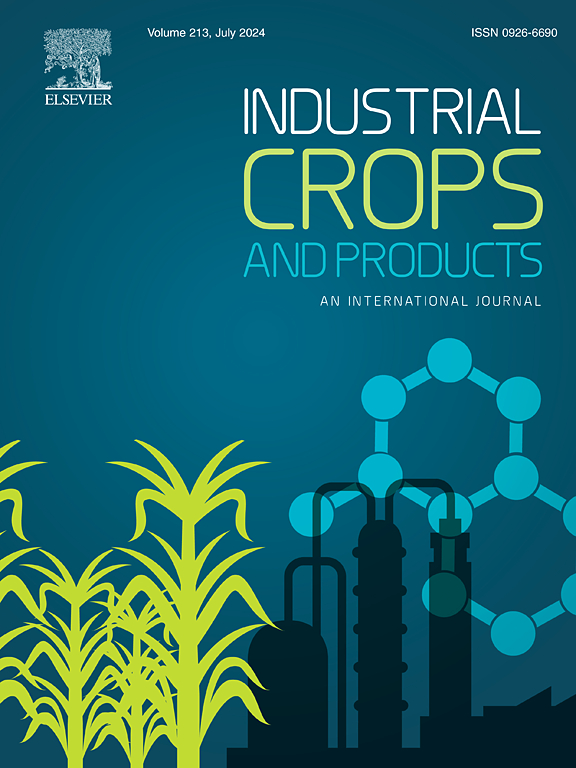Directed cultivation strategy for dictamni cortex under climate change: A comprehensive evaluation based on species distribution models and fingerprint
IF 5.6
1区 农林科学
Q1 AGRICULTURAL ENGINEERING
引用次数: 0
Abstract
Dictamnus dasycarpus is a perennial plant in the Rutaceae and the Dictamnus genus. It is highly valued for its medicinal properties. A high market demand for D. dasycarpus leads to the over-exploitation of wild resources. Moreover, due to the impact of global climate change and human activities, the habitat of many medicinal plants has been degraded or migrated, and their yield and quality have been seriously affected. However, the distributional changes of D. dasycarpus remain poorly understood, and there is still a knowledge gap regarding the environmental factors influencing the quality of its medicinal material. This study, using Heilongjiang province (one of the core-suitable areas for D. dasycarpus) as a case study, based on species distribution models under current and future climate scenarios and fingerprint of Dictamni Cortex, constructing a targeted high-quality wild tending areas and hotspot counties. The results show that the potential suitable areas for D. dasycarpus exhibit a significant increasing trend under climate change scenarios. Still, the suitability within Heilongjiang province is gradually declining as the leading province of its distribution. The fingerprint results show that the overall quality of Dictamni Cortex samples varies across different areas in Heilongjiang province, with the highest-quality medicinal samples coming from Mudanjiang and Qitaihe cities. Statistical methods were used to explore the relationships between the five active components of the Dictamni Cortex and its overall quality. Additionally, spatial distribution layers of these components under different climatic scenarios and periods were constructed. Based on the above results, we recommended the targeted tending of Dictamni Cortex in specific counties and cities within Heilongjiang province. Our study can provide theoretical guidance for the tending, management, and sustainable use of Dictamni Cortex. It also provides a novel research approach for conserving other medicinal plant resources.
求助全文
约1分钟内获得全文
求助全文
来源期刊

Industrial Crops and Products
农林科学-农业工程
CiteScore
9.50
自引率
8.50%
发文量
1518
审稿时长
43 days
期刊介绍:
Industrial Crops and Products is an International Journal publishing academic and industrial research on industrial (defined as non-food/non-feed) crops and products. Papers concern both crop-oriented and bio-based materials from crops-oriented research, and should be of interest to an international audience, hypothesis driven, and where comparisons are made statistics performed.
 求助内容:
求助内容: 应助结果提醒方式:
应助结果提醒方式:


